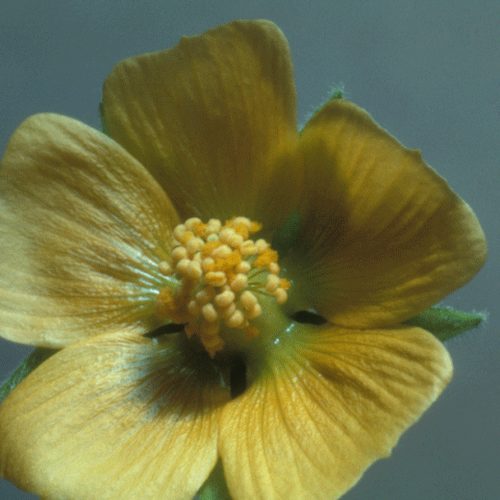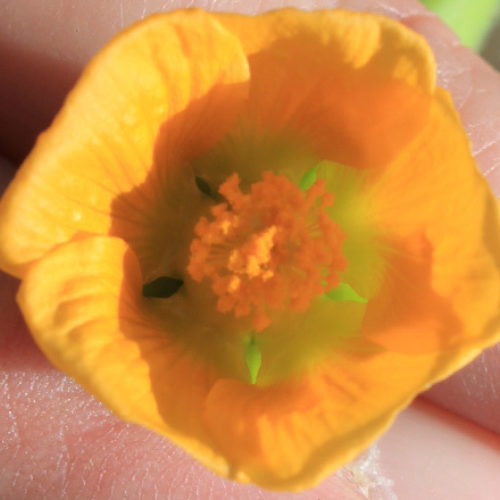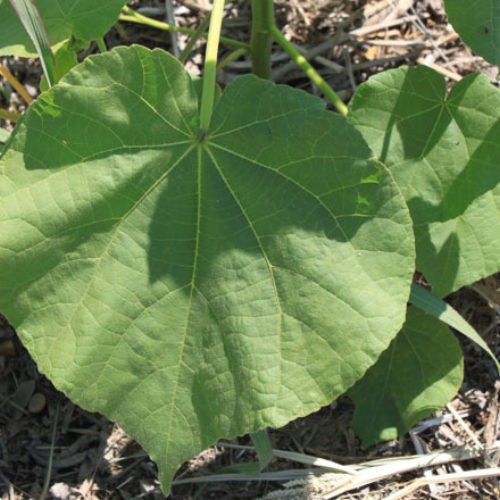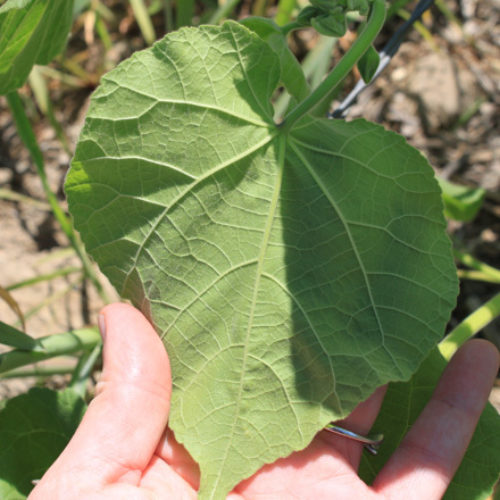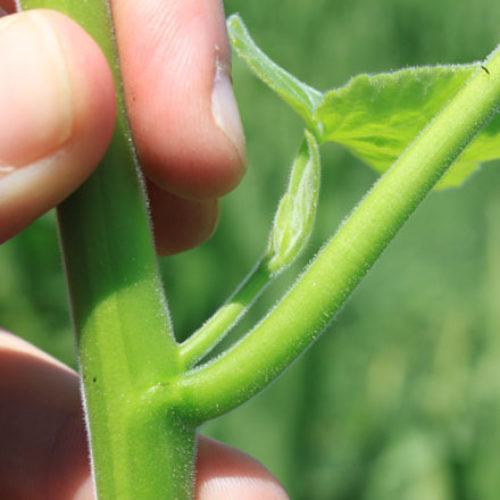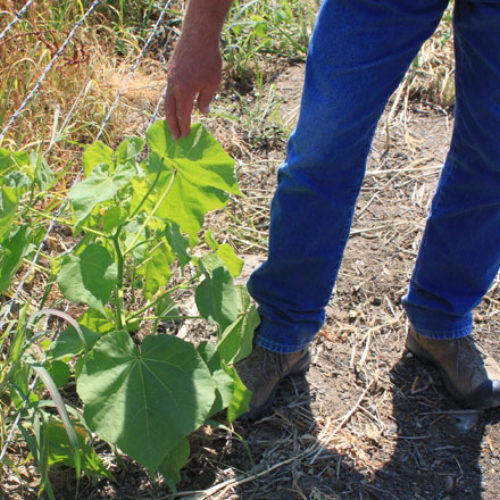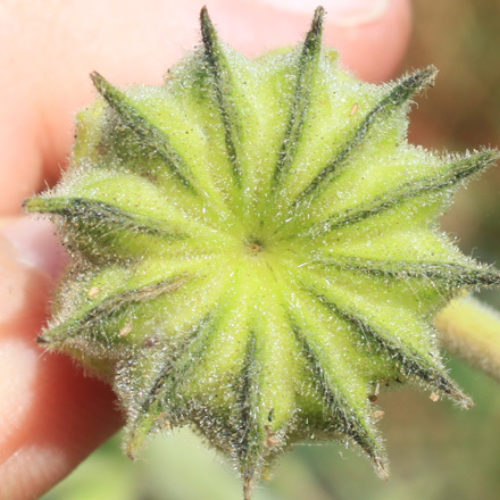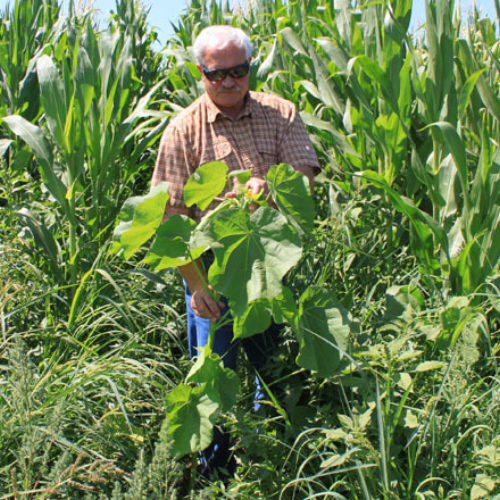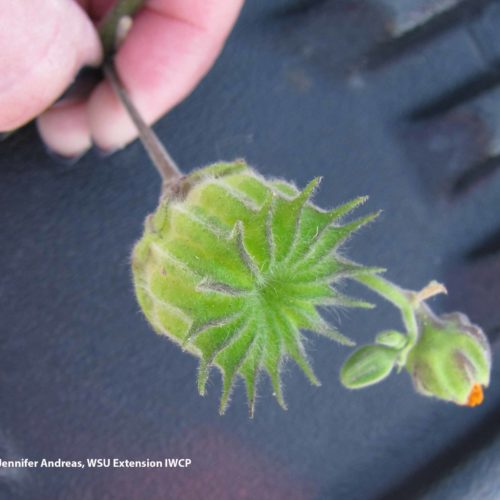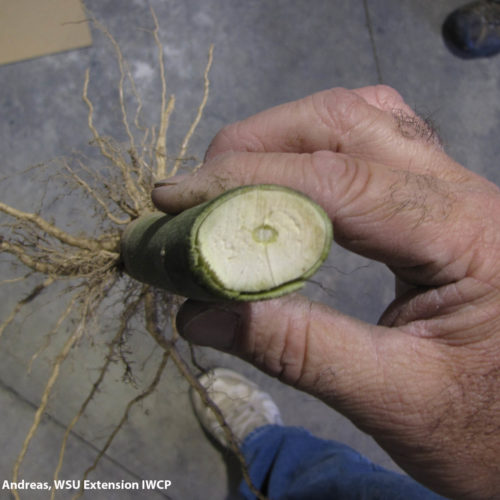Velvetleaf
Abutilon theophrasti
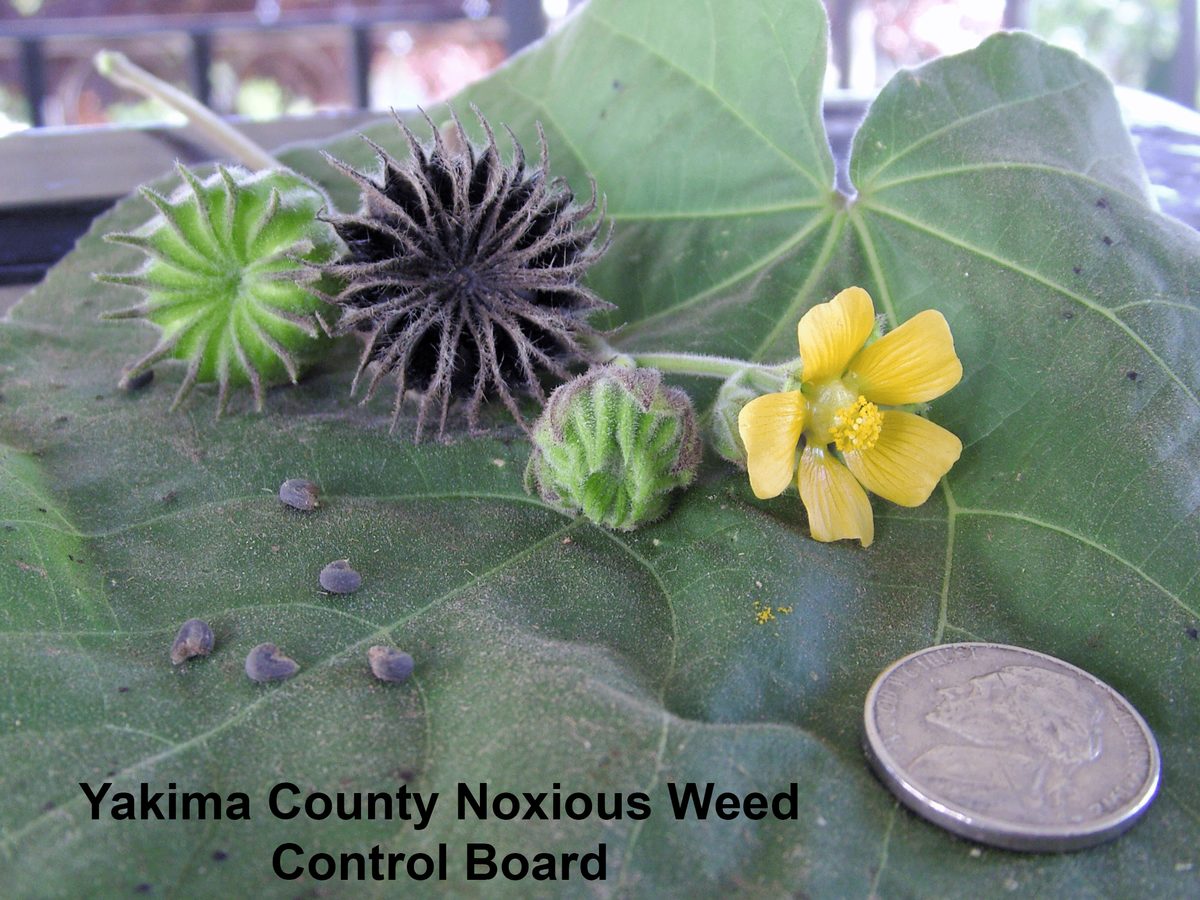
Family: Malvaceae
Other Common Names: Indian mallow, butterprint, buttonweed
Weed class: B
Year Listed: 1988
Native to: Eastern Europe, Asia and Northern Africa
Is this Weed Toxic?:
livestock
Legal listings:
This plant is also on the Washington State quarantine list. It is prohibited to transport, buy, sell, offer for sale, or distribute plants or plant parts of quarantined species into or within the state of Washington or to sell, offer for sale, or distribute seed packets of seed, flower seed blends, or wildflower mixes of quarantined species into or within the state of Washington. Please see WAC 16-752 for more information on the quarantine list. For questions about the quarantine list, contact the Washington State Department of Agriculture's Plant Services Program at (360) 902-1874 or email PlantServices@agr.wa.gov.
Why Is It a Noxious Weed?
It outcompetes the cultivated plants for resources. Seed bank establishment makes eradiation difficult as seeds can remain viable in the soil for 50 plus years. Leaves and seeds have allelopathic effects that inhibit the germination and growth of crops.
How would I identify it?
General Description
Velvetleaf is a tap-rooted annual reaching 3 to 8 feet tall and is covered in soft hairs.
Flower Description
Flowers typically solitary on short stalks in upper leaf axils. Flowers about 3/4 inches wide with five yellow to yellow orange petals and numerous stamens that are fused at the base to form a tube.
Leaf description
Leaves are alternately arranged (or with alternate arrangement) on stem with petiole (leaf stalk). Leaves are rounded and heart-shaped (cordate) with a pointed tip. Leaf width typically 2 to 5 inches but can be as wide as 10 to 12 inches.
Stem description
Velvetleaf grows from a stout, main stem with upper branches.
Fruit Seed Description
Semi-rounded to cup-shaped capsules composed of many compartments (carpels). Each compartment contains 2 to 9 seeds.
Where does it grow?
Velvetleaf is a common weed of waste areas, roadsides, vacant lots, fence rows and around farmsteads where it is found in barnyards, cultivated fields and gardens. Please click here to see a county level distribution map of velvetleaf in Washington.
How Does it Reproduce?
Velvetleaf reproduces by seed, each plant produces 700-17,000 seeds. Seeds remain viable for 50 - 60 years and remains viable after passing through animal digestive tracks.
How Do I Control It?
Mechanical Control
Small infestations may be hand removed or tarped. The entire plant must be removed.
Herbicide Control
Please refer to the PNW Weed Management Handbook, or contact your county noxious weed coordinator.
For More Information
See our Written Findings for more information about velvetleaf (Abutilon theophrasti).
Stevens County NWCB Fact Sheet on velvetleaf
Pierce County NWCB Fact Sheet on velvetleaf
King County NWCB Fact Sheet on velvetleaf



